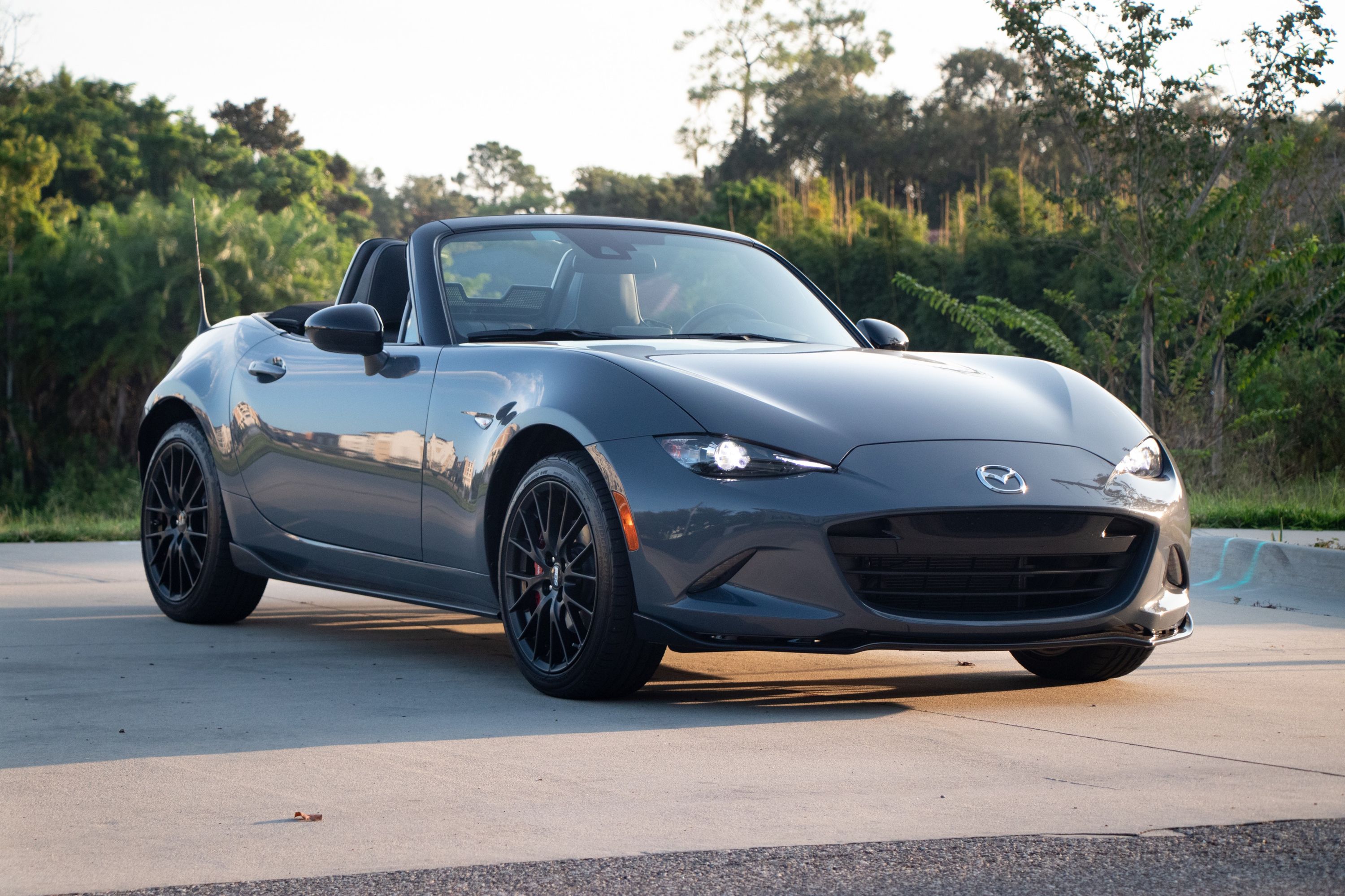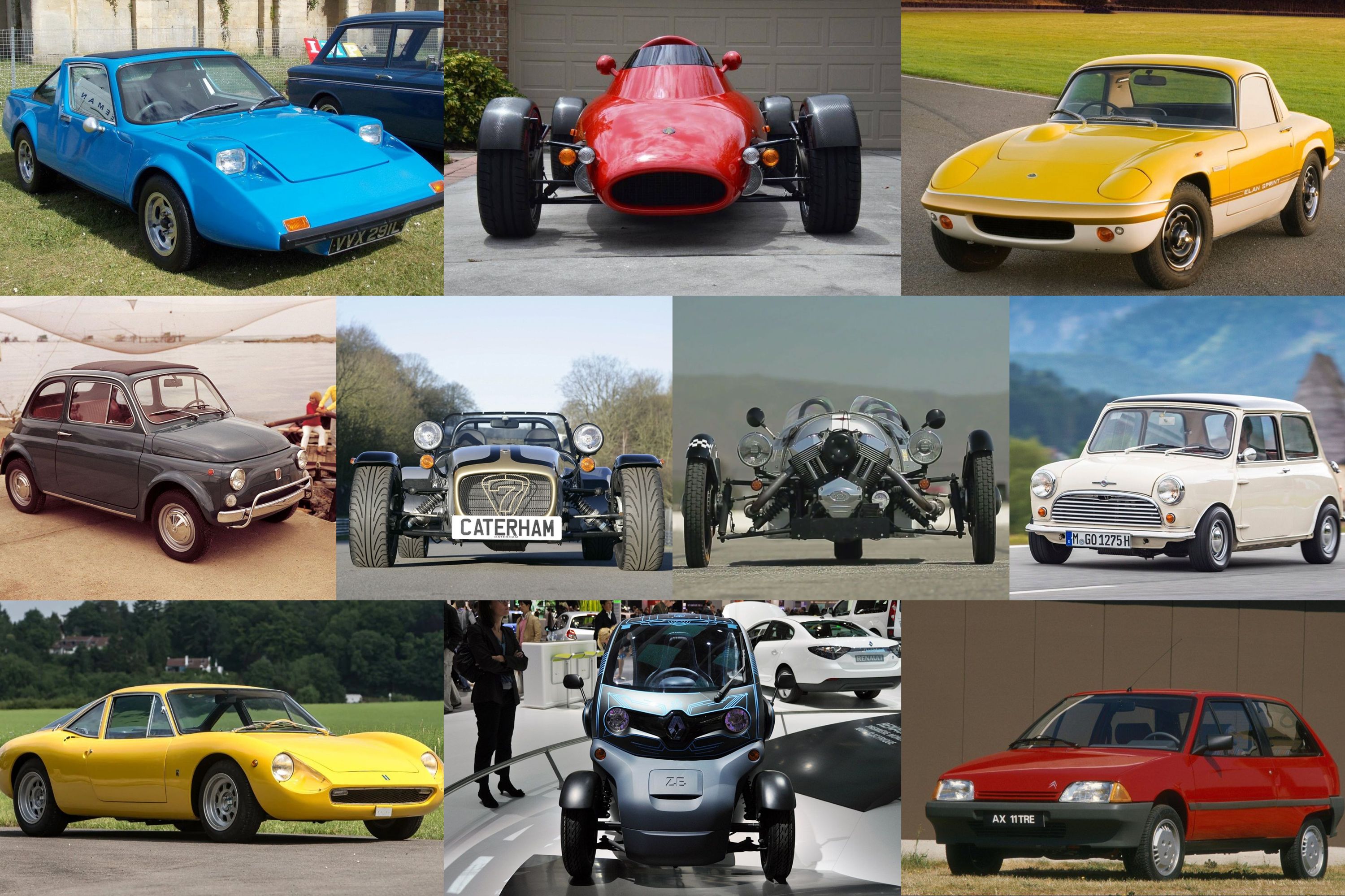
There are two main reasons for making a car as light as possible. One is to, as Colin Chapman of early Lotus fame put it, "add lightness" to help aid performance on a sports or race car. The other is for fuel economy as the less an engine has to pull around, the less fuel it needs to use. Over the years, building super-light road cars has become harder and harder due to crash structuring and mandatory safety equipment. Some of these cars come before that, and there's a couple on our list of lightest production cars that you really would not want to be involved in an accident while driving.
Currently, McLaren is claiming that it's making its lightest car yet, but McLaren hasn't actually announced the final weight. We're fascinated by this because, in the modern era of cars, there's a lot of equipment that can't be shed, like airbags and crash structures. That means it's unlikely that the McLaren Elva will be the lightest modern era production car ever made, but it could be a contender. The kicker being that Gordon Murray, who had an epic career with McLaren, also had a heavy hand in the lightest car on this list.
1986–1998 Citroen AX: 640 kg
The little Citroen AX was designed to be as fuel-efficient as a town car. The lightest three-door hatchback design used plastic panels in non-load bearing areas along with careful use of varying thicknesses of steel elsewhere to keep weight to a scant 640 kg. It was also incredibly aerodynamic for the time with a drag coefficient of 0.31. It came with a 1.0, 1.1, or 1.4-liter four-cylinder engine. As it got older and developed more options, the AX did get heavier, especially in AX GT guise. However, the AX GT still only came in at 722 kg, and despite a 1.4-liter engine making 101 horsepower, it was a fearsome little hot hatch.
1971-1973 Clan Crusader: 615 kg
The Clan Crusader is an obscure car, but it was put together by a small team of ex-Lotus engineers. The Crusader's backbone is a remarkably strong fiberglass monocoque chassis, and it was made available as either a kit car or with a 51-hp engine from the British Hillman Imp. The engine sat in the back, making it rear-wheel drive as well as rear-engined. Its design was incredibly intelligent, weighing just 615 kg, and the motoring press at the time loved the Crusader. It was short-lived as a product but successful in competition, and legend has it that the Clan Crusader managed to be the only car ever certified for racing using a roll bar made from rope that was bonded into the body shell.
1962 Lotus Elan: 584 kg
Colin Chapman's philosophy of performance derived from simplicity and removing weight had to be balanced with comfort and convenience in Lotus-built road cars. The Lotus Elan became the benchmark for performance and one that lives on in spirit through the Mazda MX-5. Contributing to the roadster's claimed 584 kg is the fact it was the first production car to use a steel backbone chassis with a fiberglass body. The first 22 Elans off the production line had 1.5-liter engines before Lotus enlarged them to 1.6 liters. The first Elan model ran until 1975, but, as legislation increased and it became more refined, it quickly started gaining weight.
1959 Mini 850: 580 kg
The Mini was small, stylish, and fuel-efficient yet had space for four people inside. It became so fashionable that a skirt was named after it, but we're talking about the Mini here because it weighed just 580 kg despite having a peppy 850-cc four-cylinder engine under the hood. Although the first generation Mini stayed in production until 1968, it gained weight when the British Motor Corporation realized it would be a good idea if they built it a bit stronger and started using thicker steel. Early 1959 models became popular with people wanting to race them, while the following models became popular with everybody else. By 1965, 1,000,000 Minis had been sold, and the 4,000,000th rolled off the production line in 1976. By the time it went out of production in 2000, 5,387,862 had been sold.
2020 Morgan 3 Wheeler: 524 kg
According to the incredibly unique and small British company, "the Morgan 3 Wheeler is a rebellion against sanitized, modern motoring." Each one has a handcrafted aluminum body over a tubular steel chassis and a handcrafted ash wood frame. Along with the wood and aluminum used to build the 3 Wheeler's structure, a conspicuous lack of a fourth wheel and any passenger seats or equipment also keeps the weight down to a scant 524 kg. This is a car to be enjoyed, not raced, so the top-spec model has a 68-hp S&S V-Twin motorcycle engine putting power to the rear wheel through a Mazda five-speed transmission.
2020 Caterham Seven: 500 kg
Caterham's cars are never heavier than they need to be as they are based on Colin Chapman's Lotus 7, which was an embodiment of Chapman's philosophy of performance derived from simplicity and removing weight. It's a popular belief that the 2006 Caterham Superlight R400 was the lightest model, but none of Caterham's current models are much over 500 kg. They're powered by either Ford Duratec engines for the more powerful models or Ford Sigma engines for regular models. Available in the US as well, the entry-level Caterham weighs around the same and hits 62 mph in 5.0 seconds using the 1.6-liter Ford Sigma engine.
1964–1968 De Tomaso Vallelunga: 500 kg
Another obscure car on this list comes from De Tomaso in Italy, and like most of the company's cars, it's powered by a Ford engine. Contrary to the Pantera's V8, though, the Vallelunga has a 1.5-liter four-cylinder engine much more commonly seen in the Ford Cortina. Ford's Kent engine was popular in motorsport at the time, which the De Tomaso Vallelunga utilized along with aluminum bodywork and a space frame chassis that weighed just 500 kg. It hit 0-60 mph in 6.0 seconds and had a top speed of 155mph. Only 55 were built in total, and they go for big money when they show up at auction.
1957–1975 Fiat 500: 500 kg
Before Mini took the headlines, the best small-town car you could buy was Fiat's cute little four-seater. The 500 name comes from its original 479-cc engine being rounded up to 500 cc, and not its 500-kg weight. The Mini had twice as much displacement, but the Fiat 500 saved weight by having two fewer cylinders in its engine. It also had a little less than 20 hp to carry its four passengers around in post-war Europe, but it was a hit and stayed in production until 1976 with almost 3.5 million models sold. It was reborn in 2007, but with all the weight of a modern four-cylinder engine, safety features, and conveniences we expect now.
2012-2020 Renault Twizy: 450 kg
It's a matter of taste whether you think the electric-powered Renault Twizy is as ugly as sin or cute as a button. What we can't argue over is the fact it weighs just 450 kg and a range of 45 miles. At 2.3 meters long and just 1.4 meters wide, the city is its natural home. It also costs around $8,500 in Europe and is so cheap because doors are a paid option, although you do get the doors of a billionaire. Bizarrely, the Twizy was the top-selling plug-in electric vehicle in Europe during 2012 when it first hit the market, and, until recently, you had to rent the battery packs. Since 2018, there have been rumors that it would come to America for a ride-sharing service, but nothing has come of it yet.
1991-1998 LCC Rocket: 386 kg
LCC stands for Lightweight Car Company. The Rocket was the only car produced by the company headed by Gordon Murray and racing driver Chris Croft. They threw every trick and available lightweight material at the road-legal two-seater car and came out the other side with a stunning 386-kg curb weight. It wasn't slow either, and power was supplied by a 1000-cc Yamaha engine delivering either 143 hp or 165 hp depending on the specification and could clear 0-60 mph in 4.4 seconds. Only 55 were made, and was more a project born of taking the "add lightness" mantra to the extreme than to make money.

